


The word “sportswear” typically brings to mind the American Way of Life. However, few people know that one of the first fashion houses to draw inspiration from sports to create a new line of urban clothing was an Italian brand, Missoni.
The world-renowned fashion house has seamlessly blended the art of knitting with its Olympic roots, forming its distinctive DNA from the beginning. The founder, Ottavio Missoni, was an Olympic athlete excelling in running. In 1939, he was the world’s fastest 18-year-old in the 400 metres. He represented Italy in the 400-metre hurdles at the 1948 London Olympics, where he met his future wife, Rosita Jelmini, who was the heir to a silk textiles company.
After marrying on April 18, 1953, Ottavio and Rosita Missoni founded Missoni in the same year. They set up a small knitwear workshop in the basement of their house in Gallarate, continuing the business Ottavio had already started in Trieste.
Visualizza questo post su Instagram
As the countdown to the 2024 Olympics begins in the City of Light, Istituto Marangoni in Paris is working on a project to establish a connection between the younger generation and Missoni, the fashion house known for infusing athletic inspiration into wearable art forms. Their upcoming project, “Zaudacity,” reflects a bold desire to challenge conventions and expand horizons, perfectly aligning with the daring spirit of Generation Z.
At the Italian Consulate in Paris for Italian Design Day, Istituto Marangoni Paris had the privilege of hosting Luca Missoni, the son of Ottavio and Rosita Missoni. Serving as President of the Archives and Vice-President of the Ottavio and Rosita Missoni Foundation, he delved into the origins of the Missoni myth. Joining him was Pietro Fadda, an alumnus of Istituto Marangoni who now contributes his creativity to the Missoni brand. They later met with students at the school.
Eager for more insights? Dive into an engaging conversation with a representative of Missoni’s second generation, shedding light on the journey of their iconic knitted stripes and Zigzag patterns and their pioneering approach to sportswear—venturing beyond American borders. Plus, discover how they have been practising upcycling long before it became a mainstream trend, showing their commitment to preserving the planet’s future.
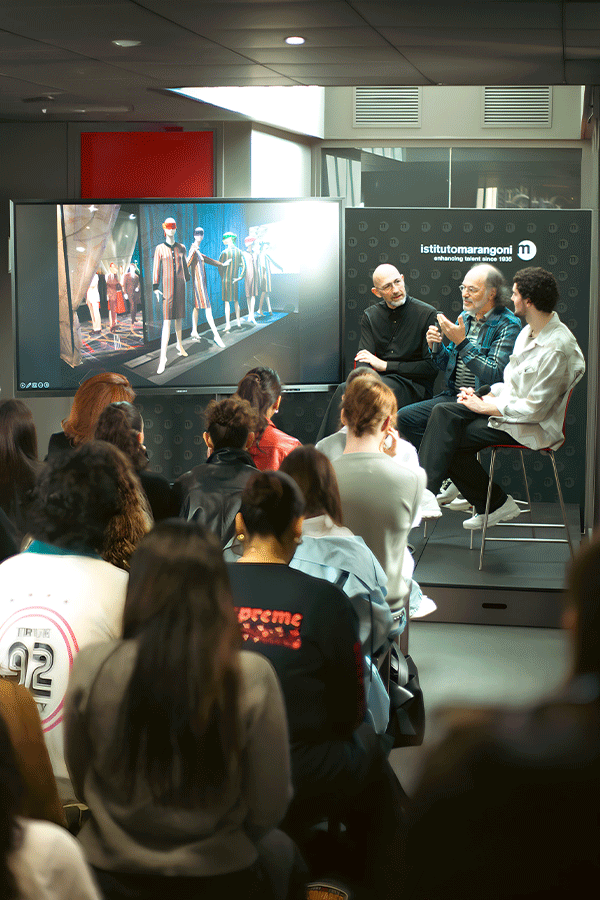
From left to right: Gianni Nembrini (Fashion Design Programme Leader at Istituto Marangoni Paris), Luca Missoni (Artistic Director of the Missoni Archives) and Pietro Fadda (IM Alumnus and Creative for Missoni) during a captivating talk at Istituto Marangoni in Paris
Luca Missoni, what connects sports to Missoni’s famous knitwear?
In his early years, my father, Ottavio Missoni, showcased remarkable talent in athletics. By the age of 16, in 1937, he became the youngest member of Italy’s national team. With his earnings, he started a small business that produced jersey suits for gymnastics and athletics teams. Beginning with two jersey knitting machines, he used his expertise in sports clothing and teamed up with his talented wife, Rosita. Ottavio’s reputation as a sports hero created a solid foundation for the business’s inception.
It sparked a true revolution since knitted fabrics were relatively uncommon during that period.
In the early 1950s, knitted products were not commonly found in the clothing industry. Fashion stores mainly sold machine-woven garments, with the exception of jersey underwear and a few hand-knitted cardigans and pullovers. Knitting was still mostly a hobby done at home.
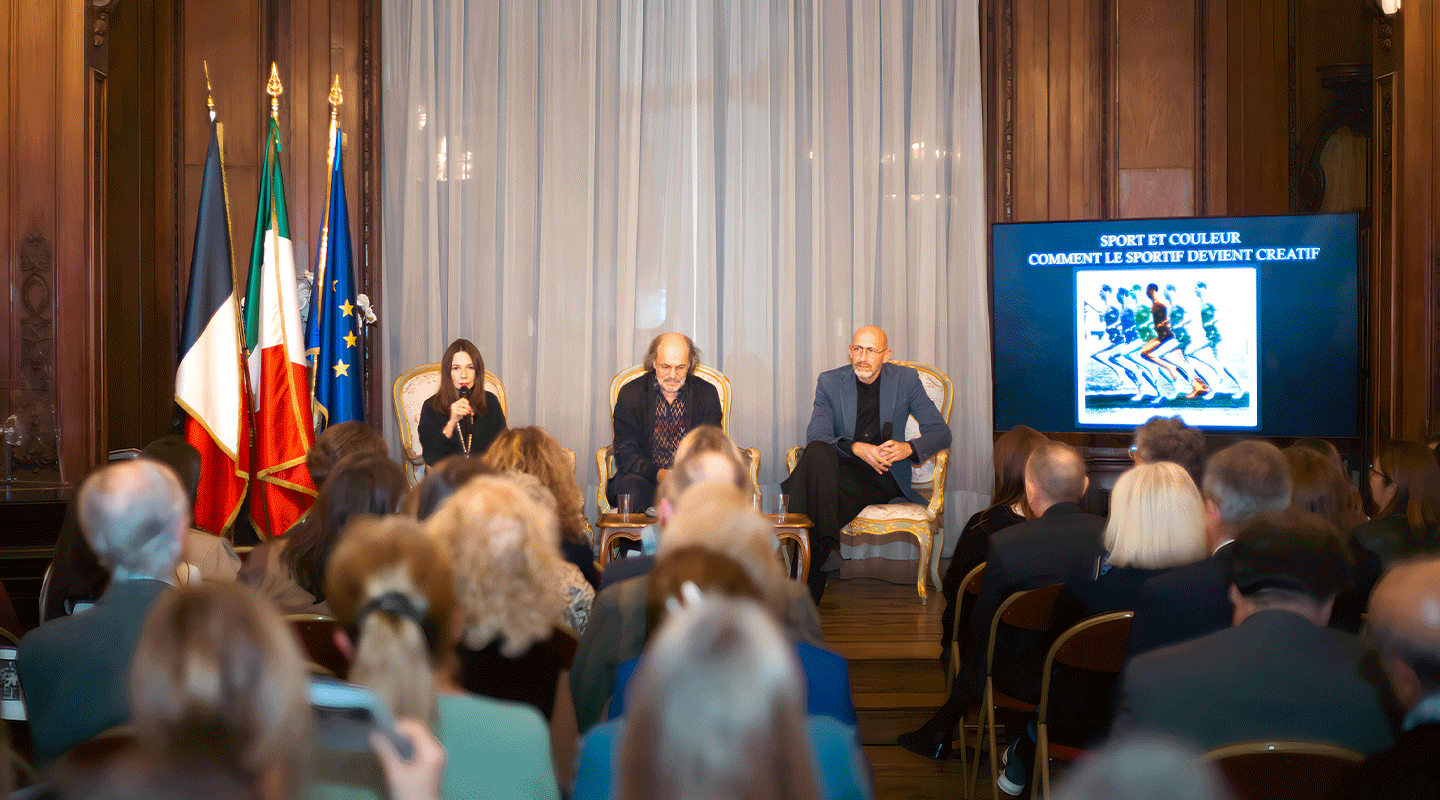
From left to right: Silvia Manzoni (Journalist and Istituto Marangoni Editorial Advisor), Luca Missoni (Artistic Director of the Missoni Archives), and Gianni Nembrini (Fashion Design Programme Leader at Istituto Marangoni Paris) during Italian Design Day hosted at the Italian Consulate in Paris
Did Missoni’s knitted designs also reflect the evolving role of women in Italian society at the time?
During this period, women started to take on a wider range of social roles, venturing into professions and occupations previously dominated by men. They began to assert greater independence in their personal lives. Seeking more practical and comfortable clothing options, women turned to field sports attire, often wearing long pants and T-shirts similar to those worn by men. Sensing this desire for innovation, my parents responded by offering garments that were not only easy to wear for their shape but also embodied a less formal approach to life. Knitted apparel held the distinct advantage of allowing individuals to look well-dressed while also affording freedom of movement.
How did Missoni achieve fame for its distinctive stripes and Zigzag pattern, which ultimately became the brand’s iconic signatures?
The knitting machines gave them the opportunity to experiment with varying colours and sizes. In an era when clothing was predominantly printed to achieve colour, they innovatively crafted multi-coloured knitted stripes that quickly gained popularity. For Missoni, the machine was nearly an extension of the artisan’s hand, working in tandem to create beautiful pieces of clothing. As a result, this technique earned the nickname “Macchina-Mago.” These vibrant multi-coloured stripes have been known as “Missoni stripes” since the early days of Missoni and continue to be a signature element of the house’s designs today.
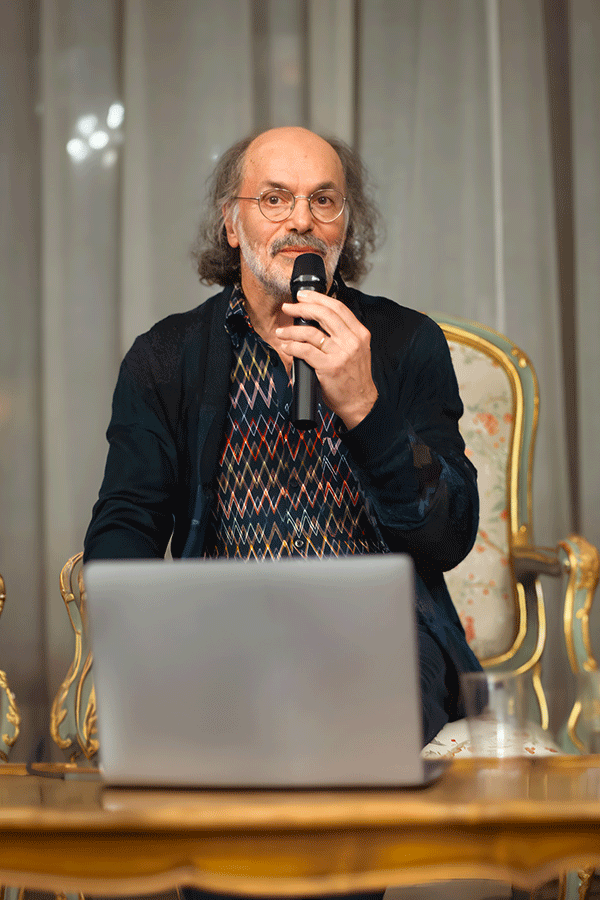
Luca Missoni (Artistic Director of the Missoni Archives) at the event organised by Istituto Marangoni Paris and hosted at the Italian Consulate in Paris during Italian Design Day
In the 1970s, Missoni led the way in upcycling with their Patchwork creations, which reused fabric scraps from previous productions. How did this innovative approach come about?
It all began in 1971 during a special winter fashion show in the mountain town of Cortina. Rosita, my mother, tasked Ottavio Missoni with crafting eight outfits using the patchwork technique he was then experimenting with. Ottavio ingeniously assembled small leftover scraps of knitwear production, resulting in stunning kaleidoscopic compositions. This led to the establishment of the Missoni Style, which was affectionately dubbed ‘put-together’ by Americans. In recognition of their innovative fashion designs, they received the prestigious Neiman Marcus Fashion Award in 1973, often referred to as the Oscar of fashion.
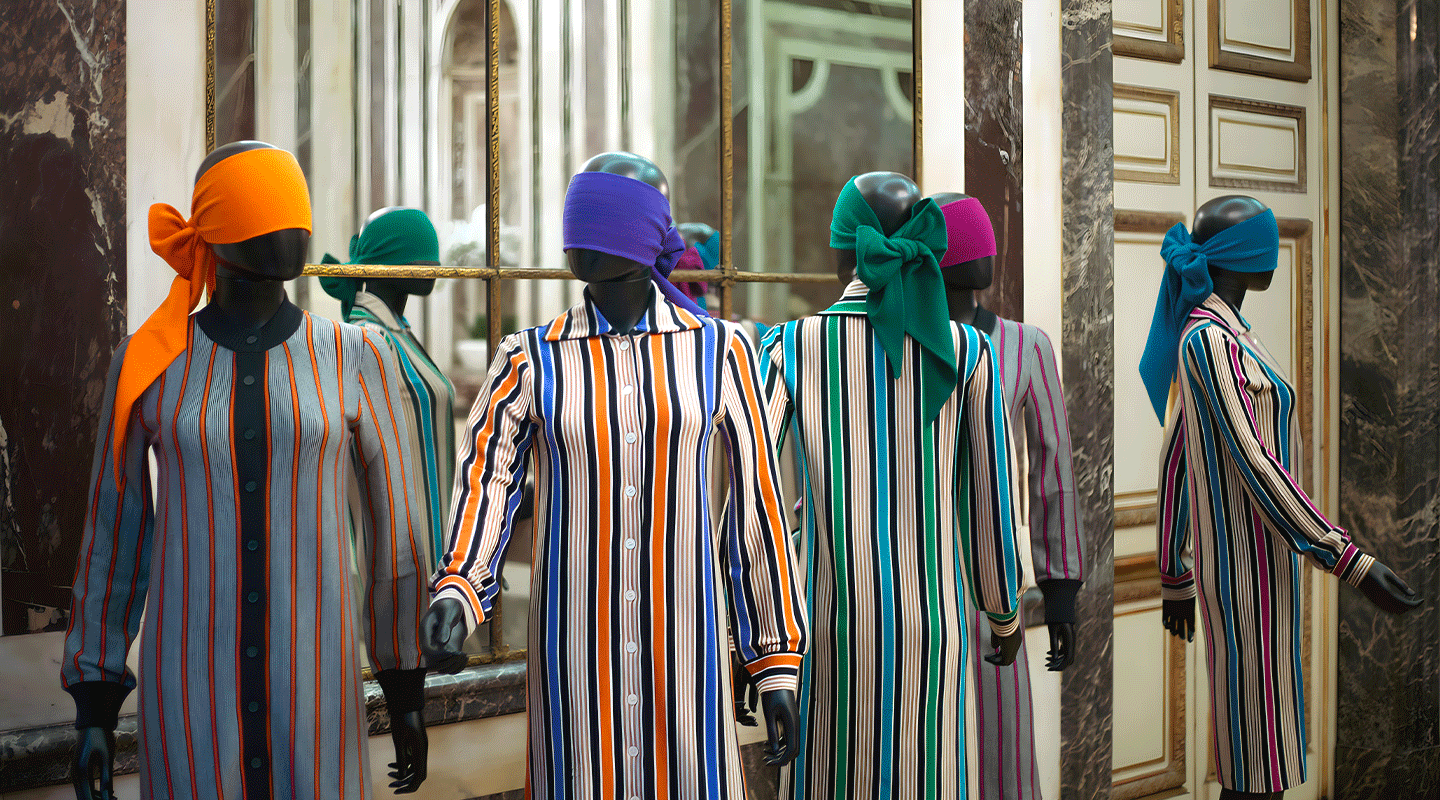
Istituto Marangoni Paris organised a captivating conversation with a representative of Missoni’s second generation, Luca Missoni, shedding light on the journey of their iconic knitted stripes
Patchwork reinforced Missoni’s artistic connections and allowed them to draw inspiration from artists like Sonia Delaunay, Paul Klee, and the Futurism movement of Balla and Severini. But it didn’t stop there—it also opened doors for the brand’s expansion into home decor. Is this sector still a priority for Missoni?
In the mid-1970s, Ottavio and Rosita Missoni used their experience to create knitted and leather fabrics to cover sofas and armchairs for the Saporiti furniture company. For their advertising campaign, they asked Ottavio Missoni to create large patchwork to use as rugs or to hang on walls. When people saw the ads, they began to request these ‘decorative elements,’ and it was their first direct experience in home design. Ottavio Missoni continued this particular artistic research, which led to his first solo exhibition in an art gallery in Milan in 1981. The Naviglio Gallery showcased Ottavio’s patchwork, which Guido Ballo dubbed “Nuovi Arazzi.” (Editor’s note: Renato Cardazzo, who presented the catalogue, wrote: “Missoni is not a factory, not a designer, but simply an artist.” The “Nuovi Arazzi” were then exhibited in a solo show at the Art Museum of the University of California at Berkeley). Ottavio Missoni continued this special art for the next 20 years.
Visualizza questo post su Instagram
Could you tell us more about the Missoni Archives?
They are incredibly valuable as they serve as the central location where we preserve the essence of our work, which in turn helps us to enhance and communicate the brand’s identity. It is a treasure trove that is brimming with sources of inspiration, showcasing the visionary eclecticism that characterises Missoni.
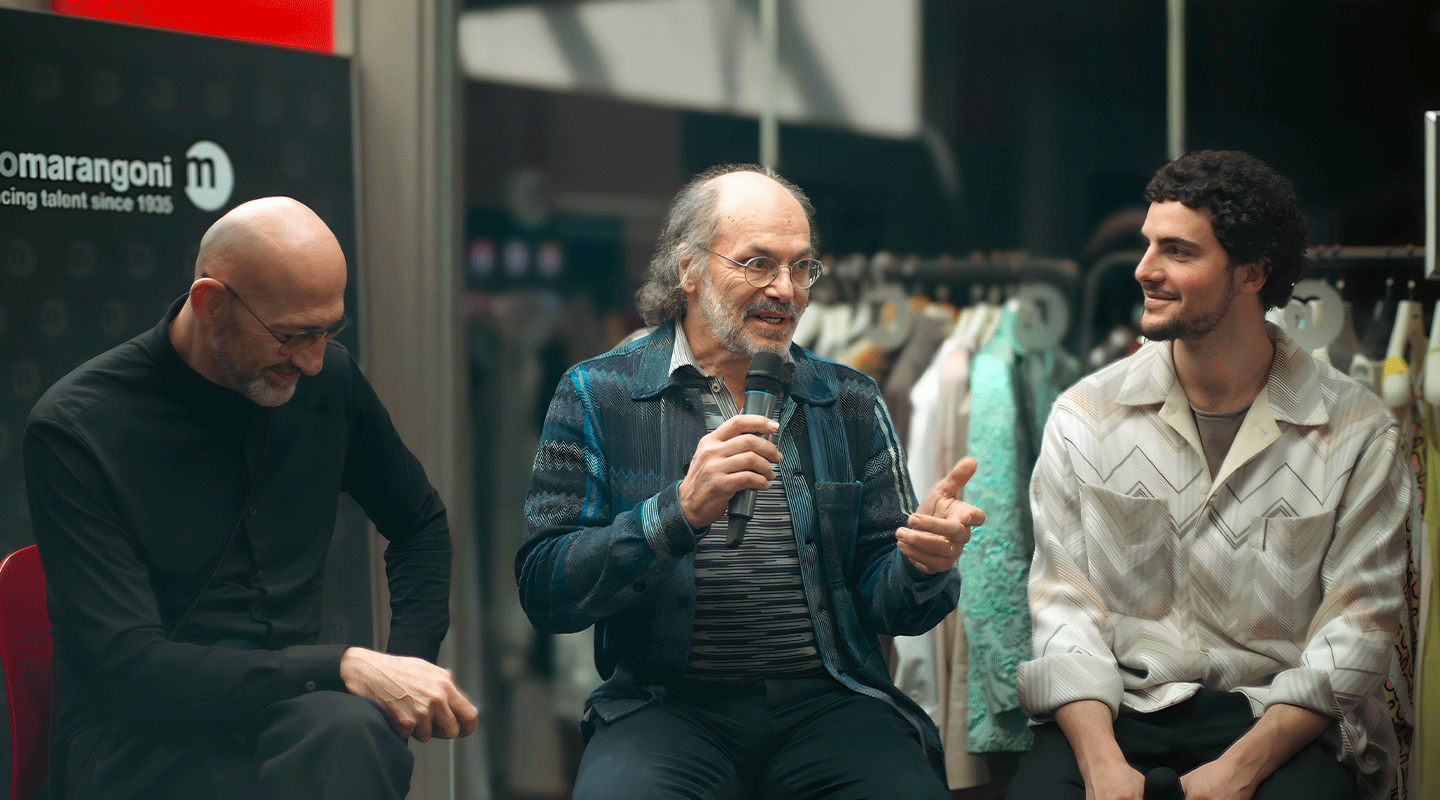
From left to right: Gianni Nembrini (Fashion Design Programme Leader at Istituto Marangoni Paris), Luca Missoni (Artistic Director of the Missoni Archives) and Pietro Fadda (IM Alumnus and Creative for Missoni) at Istituto Marangoni in Paris
Silvia Manzoni
Journalist, Paris



